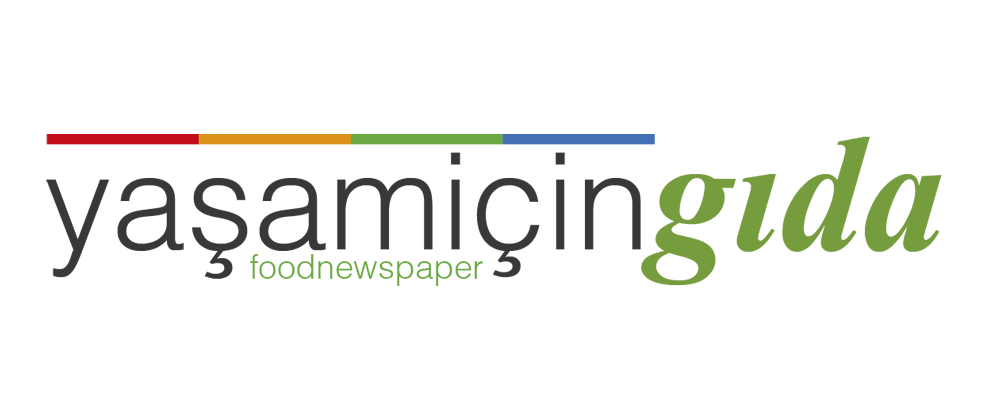
Food Safety and Global Demand
Today, companies are competing to produce food with high levels of safety and free from contaminants and disease. They are taking actions in food security and apply safety standards to achieve a strong, safe, stable and healthy food system. Regulatory structures are being very strict and consumers are increasingly concerned with the safety and ethical production of food products. By 2050, over 60 percent of the world’s food demand will come from Asia due to the increasing population and growth in economies. This food demand will be dairy, meat, seafood, fruits, vegetables and nuts in general.
Improve Your Long-Term Global Growth Vision!
Therefore, the food industry has to position itself to meet other food demands from other countries by increasing agricultural production, using new technologies, developing new products, entering new markets, leading an innovative talent management and producing high quality food and beverage products at competitive costs in the long-term. Therefore, companies have to develop and implement a simplified and productive supply chain system to improve overall product quality, profitability and customer loyalty.
Create Your Competitive Advantages
Quality and safety of the foods, using new technologies and working with the great skills are being crucial and competitive factors in today’s agriculture, food and beverage manufacturing operations and supply chain. Contaminants can be chemical, physical and biological. I see that companies are trying to keep the food safety at the maximum by taking some important actions. But, we learn that some companies have issues in the market and they recall their products.
Clearly, I have to define that simply certifying the food management system and quality does not guarantee the high degree of identification, traceability, assessment and control of hazards in the food supply, processing and supply chain.
My experience in the Pharmaceutical and Food Industries
When I worked in the baby food industry, I have managed a controlled agricultural program to supply raw materials in baby food quality in accordance with the EC regulations. We have developed and implemented an excellent program and applied it. Our contaminants management strategy was successful and we saved a lot of money by supplying fruits, vegetables, meat, chicken, turkey and cereals from Turkey. Of course, we have applied a food safety program that covers a well-developed and controlled HACCP system and full traceability from the field to fork in our supply chain. So that we prevented the food failures in the value chain.
On the other side, I know that applying effectively GMP rules in the pharmaceutical manufacturing industry will bring safe products to the market. I have worked 18 years in the pharmaceutical manufacturing operations, quality and microbiology, and I have applied very strict rules of GMP. Therefore, we didn’t face with a failure in the process, and/or market. Of course, we had great success in the operational excellence and organizational agility.
Product Failures and Recalls are Great Pains!
Product recalls damage company image, customer loyalty, growth and competitive advantages. I see that some companies have quality issues and we learn from the social media. They are unhappy due to financial losses, unhappy customers and decreasing market share. They know that if such issues continue it can damage their company’s image and may contribute to the business failure.
Crucial Importance of Experience, Know-How and Skills in Leaders and People
You can prepare a lot of SOPs and/or manuals to prevent failures. But, they cannot guarantee to prevent failures. According to my intensive experience and know-how in the food and pharmaceutical operations, I have to say that people’s quality is crucial to prevent such failures.
I like Steve Jobs and his well-known quote;
“Innovation has nothing to do with how many R & D dollars you have. When Apple came up with the Mac, IBM was spending at least 100 times more on R & D. It’s not about money. It’s about the people you have, how you’re led and how much you get it”.
Some leaders think that they developed and implemented best systems and there will not be any possibility to have product failures in the value chain . Their nose is in the air!. They develop jungle-like skills in avoiding problems. Some of them fall into ‘I hear what you say’ trap. These are good examples of poor leadership. They forget the human factor!
The Reasons for the Quality Failures in the Food Industry.
1- Raw and packaging material quality.
They don’t analyse. They trust in the supplier’s results.
They analyse and make a mistake in the analyses.
They analyse the raw material in the external laboratory and the result is a false positive.
2- Damaged products in the line.
People don’t inspect what they produce. Damaged products go the market.
- Poor regulatory knowledge.
They approve raw materials, bulk products and/or finished products that are not conforming regulatory limits due to their poor regulatory and technical knowledge and having pressure from the leadership.
4- Using poor quality products.
Using quality defected products in the new productions creates quality failures in the final product during shelf life. Customers can purchase such products and detect quality defects. This situation contributes to the customer dissatisfaction and losses in the market share. These poor quality products can also be detected by authorities and shared with the social media and public.
5- Working with the unskilled people.
Unskilled people can not see the quality defects, failures and possible results.
6- Working with the disengaged people.
Disengaged people may not care the quality limits and send the products to the market without informing the upper levels.
7- Removing great skilled people from the organization.
This situation creates a great loss in knowledge, experience and skills and can create cost increases and decreases in customer loyalty. Poor leaders aim to increase the cost saving and don’t calculate the results in the future.
8- Poor morale and motivation in the workplace due to the poor leaders and managers.
9- Poor HR management and high turnover.
10- Using old technology in the operations.
11- Clubs, clans, internal politics and toxic culture in the organization.
12- Poor leadership in the supply chain, quality, operations and/or senior management.
13- Poor warehousing, transport and retail management.
14- Poor organizational alignment, agility and operational excellence.
15- Poor training, development and rewarding policies.
16- Poor cooperation and communication with external bodies.
17- Wrong applications of operational processes by people due to poor experience, knowledge and skills.
18- Weak manpower.
The number people are important to create quality and efficiency in the operations. If the number of people are less, this will create problems such as low productivity, high cost, health and safety issues, disengagement, low morale and motivation and quality problems in the operations.
19- No standing on the field operations, suppliers, warehousing, production line, quality department and study the process. Poor inspection and improvement.
20- Poor analyzing the facility.
21- There is no feasible targets.
22- Poor vision sharing and poor commitment to the business goal.
23- Poor candor effect in the organization. False feedback to the upper levels.
24- Poor commitment of leaders to sustainable improvement in quality performance, customer satisfaction and regulatory compliance.
25- Failures in optimizing the quality and compliance management systems due to the unqualified quality and/or senior leaders.
26- Poor benchmarking and competitive intelligence.
27- Poor efficiency, productivity and competitiveness.
28- High trust to the systems and neglecting the people’s experience, knowledge and skills.
29- Limited knowledge and skills to implement the HACCP, effective contaminant management and full traceability from the field to the fork.
30- Lack of employee commitment to the safety of food.
31- Poor product design.
32- Customer insensitivity and poor customer complaints management.
33- Poor investment capability.
34- Lack of adequate physical conditions
Of course, we can increase the number of reasons in quality failures in the companies.
Conclusion
- Companies have to work with the well experienced leaders who have excellent knowledge and skills in quality, compliance, supply chain, operations, technology, customer experience, talent management and other fields.
- They have to train, develop and reward the right skills.
- They have to remove poor skills.
- They have to invest in innovation management, innovative technologies and practices to increase quality, efficiency and productivity.
- If they don’t have the opportunity to manage quality and compliance management in excellence, they have to hire a well experienced expert from outside.
- Companies should make benchmarking, competitive intelligence and customer surveys to improve their products and services.
- They have to create more transient competitive advantages that regards the customer needs.
- They have to improve skills by training, investment in new technologies and equipment, and better management of staff to prevent product recalls.
- They have to have a great respect for the environment, people and regulations.
- Companies have to apply an integrated food safety approach, secure an end-to-end value-chain strategy, and develop and implement an effective customer-experience vision and strategy. So that they can achieve revenue gains 5 to 10 percent and reduce costs by 15 to 25 percent within two or three years.
Don’t forget that quality is a source of competitive advantage and sustomer experience transformation. You can only guarantee it through working with the great leaders and skills.

